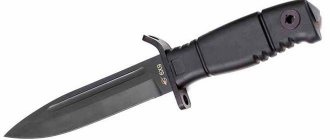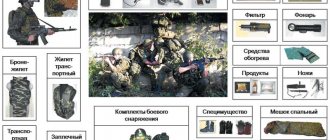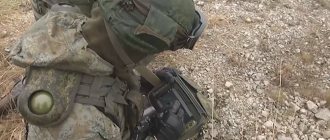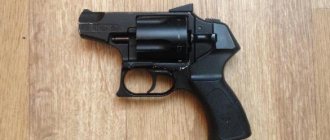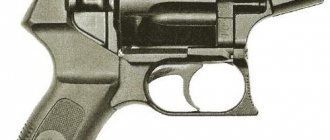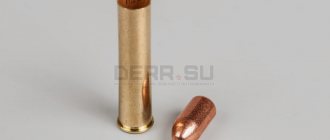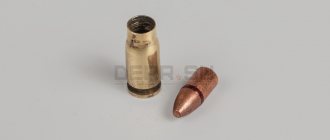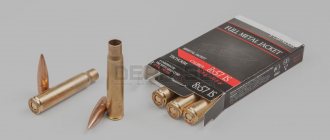Development history
For almost the entire decade, the development of a range of combat suits was carried out by a research institute specializing in precision engineering. It is he who is the main supplier of weapons for the Russian military. The developers believe that these suits will be applicable to combat in two years.
The equipment was shown for the first time 9 years ago. Then “Ratnik” was highly appreciated. The exoskeleton was recommended for mass production. Already in 2014, new kits began to appear in military formations. Now the latter number two hundred thousand. This can be called a large-scale renewal of the Russian army.
You can imagine that at the very beginning this exoskeleton was perceived simply as a new uniform made from modern materials. Later the concept was completely replaced, so the kit currently consists of many elements.
“Ratnik” is considered to be a modular complex, so all its components can be combined. The latter depends on what branch of the military you belong to. The combination is also affected by the season or location where it will be applied. Moreover, it is possible to replace a certain part of the exoskeleton without loss of functionality.
After its creation, it continues to be modified and improved. Some components are leaving, many are being updated. The army is now using a second generation exoskeleton and is preparing to launch a new one.
We also recommend that you read: “What can we expect from pistols of the future?”
Helicopter from your pocket
The futuristic appearance of the “Warrior” reminds Western experts of an imperial stormtrooper from the science fiction epic “Star Wars” or a policeman’s suit from the movie “RoboCop”. The version of the “soldier of the future” outfit was first presented at the Army 2018 exhibition. For now, this model is a prototype and, most likely, many elements may not make it into the final design. At the same time, the Russian Ministry of Defense has already announced that in the future it will have in its arsenal a fighter equipped with “Ratnik-3”.
In particular, portable miniature unmanned aerial vehicles will be built into the suit, which will help the serviceman better navigate when fighting in a city or in a forest. A container with a drone is no larger than a machine gun magazine, so a fighter can take 3-4 of these mini-drones with him and launch them for reconnaissance.
The principle of using the device is quite simple. The mini-UAV takes off from a special container, then automatically connects to the Ratnik communication and video surveillance system. The fighter controls using a tablet, and the broadcast of the “picture” is transmitted to the entire group that is participating in the operation.
However, the serviceman must take into account that in open areas the use of such devices has a number of restrictions. So, due to the light weight of the drone, using it in strong winds is problematic. In addition, the range of use of the UAV does not exceed 150 meters; an attempt to launch it over a greater distance will result in loss of signal.
A modular helmet with a transparent visor displays information about the combat situation and automatic identification of “friend or foe”
Military expert, editor-in-chief of Arsenal of the Fatherland magazine Viktor Murakhovsky is convinced that the integration of mini-drones into the “armor of the future” will certainly help Russian military personnel quickly receive data on enemy actions and quickly respond to a changing situation.
“Portable drones are already used by the British and Americans when fighting in the city. This is a helicopter-type aircraft, it is literally the size of a human palm. Powered by electric motors, almost silent. It allows, for example, to look around a corner, inspect a room, check corridors, inspect large premises such as a production workshop, that is, it is used for reconnaissance in densely built-up conditions. Undoubtedly, our military personnel, first of all, special forces soldiers, also need such devices,” the expert is convinced.
Another innovation of “Ratnik” is an electronic module for assessing the functional state of a serviceman, which records in real time the pulse and respiration rate, electrocardiogram, and blood pressure. The sensors quickly transmit a signal about the probable loss of combat effectiveness to the tablet of the unit commander and orderly. The module determines the severity of the injury and the condition of the soldier. Using this data, the unit commander transmits reports on medical losses and the location of the wounded. In addition, taking into account the degree of injury, the fighter can be administered anti-shock drugs, which will allow him to hold out until receiving first aid. As practice shows, if such assistance is provided in the first 15-20 minutes, the survival rate among military personnel who have received even severe injuries is very high.
Experts consider a successful solution to be the integration into the “armor of the future” of a modular helmet with a fragmentation-proof transparent visor, on the inside of which information about the location of units on the battlefield is displayed, as well as automatic determination of “friend or foe.” The helmet shows the fighter where the minefields and firing points are located. The guidance system allows you to accurately point the weapon at the target, which means reducing the amount of wasted ammunition. According to the developers, such a helmet will be equipped with thermal imaging cameras and other sensors that will assess the situation around the owner of the “Warrior” online.
Infographics “RG” / Alexander Chistov / Alexander Stepanov / RIA Novosti
However, not all solutions that they want to apply in “Ratnik-3” evoke a positive assessment from experts. Thus, many people perceived the information about the appearance of an active exoskeleton in the “armor of the future” quite skeptically. Of course, a design that will help soldiers move across the battlefield at speeds of up to 20 km/h, while carrying up to 100 kilograms of payload, will make life easier for the modern soldier. At the front line, during raids behind enemy lines, such an exoskeleton will help carry additional ammunition, batteries for radio stations, and dry rations. But so far it has not been possible to fully implement this idea. The biggest and so far unsolved problem with active exoskeletons, which not only our developers have encountered, but also engineers in those countries where such systems are being developed is power supply.
“The best and most expensive power sources still allow the equipment to operate under high loads for a maximum of 3-4 hours. So far, there have been no breakthroughs that would make it possible to improve the performance of exoskeletons several times over for their full use on the march or in active combat operations. Now all this can be used at training grounds, exercises and in an environment near a military base, within a small radius,” said Murakhovsky.
In his opinion, if exoskeletons are used now, they should be equipped not with raid or reconnaissance units, but with rear services and technical personnel at airfields. For example, now one of the most energy-intensive tasks for airfield support services is hanging weapons on aircraft pylons. Such devices can also help in repairing heavy tracked vehicles.
“When attaching ammunition to aircraft, the entire airfield battalion is involved. When the intensity of combat missions increases, then powered exoskeletons can be very helpful. In addition, there will be no special problems with power supply. Everything is at hand. The battery runs out of charge, you replace it and there are no problems. They are also needed for the repair and maintenance of ground vehicles, especially when it comes to tanks and other armored vehicles. The work there is very labor-intensive, even when loading ammunition. Technical support units can find use for them,” the expert explained.
Murakhovsky also believes that the composite armor presented in a promising product must undergo a long test cycle and confirm the declared characteristics. “The idea, of course, is good, but it has not been fully tested,” he said.
It is clear that it is too early to talk about what final appearance “Ratnik-3” will receive. Some elements of this promising combat equipment have already appeared in the troops, some will go into production by 2021-2022. However, experts already agree that it will be no worse than the developments being carried out in the USA, France, Germany or the UK. I would like to believe our manufacturers, who claim that its individual elements will have no analogues in the world.
*This is an expanded version of the text published in the issue of “RG”
Features of the “Ratnik 3” exoskeleton
Outwardly, it will remind you of the lavishly painted image of a fighter of the future - this is the presence of a multi-layered, fine-mesh body armor, as well as massive angular elbow pads and a fully closed helmet.
Head
The main rule in developing such an element is its lightness. This allows you to avoid bending the fighter’s neck. It's bulletproof. There is also a mask with goggles that are greatly enhanced for less serious combat. The latter is usually considered to be a display screen containing information about intelligence and the soldier’s health, for example, his temperature. In addition, the watch also displays biological indicators and target information. The helmet was created with a breathing apparatus inside.
Weapon
Manufacturers made sure that the soldier's hands were not too loaded with equipment, otherwise this would reduce its effectiveness. Therefore, the only addition to the weapon was protection against fragments. In addition, there are watches that it protects from explosions. The latter are almost impossible to destroy.
Body
The fabric has only recently been developed. The material makes it possible to make the fighter elusive to infrared images, since all the heat is concentrated inside the kit. Such a vest cannot be penetrated by a bullet, which has been confirmed by repeated tests. With its use, most of the torso is protected. There are weak inserts in the armpits and below, in the abdominal area. The fabric and vest are fire and water resistant. Moreover, you yourself will be able to regulate the temperature of the suit, based on your own comfort and tactical considerations. The suit is suitable for areas with temperatures of 30-50 degrees.
Legs
Thanks to the presence of a titanium frame that works from boots to hips and in the waist area, it is possible to redistribute weight when you walk and run. This technology will increase your endurance and also allow you to increase your running speed. The battery is located in the boots. The latter are quite resistant to mines and fire. There is also full shatterproof protection for the legs.
Helmet
The new helmet , without exaggeration, is a masterpiece among personal protective equipment. Its weight is only 1 kg, while it retains all the protective characteristics of the predecessor helmet 6B7-1M. the helmet was tested for strength. Our researchers decided to do a crossover trial. That is, while we were testing our helmet , TsNIITOCHMASH (Klimovsk, Moscow region) and the Central Research Institute of Special Engineering (Khotkovo) were testing one of the most advertised helmets today, Sentry (ACH) from the American company Ops-Core. For comparison, we also used the serial helmet , which is supplied to the Russian Armed Forces. When the Swiss specialists completed their work, the head of the ballistics laboratory at the DuPont European Technical Center said that the provided helmet of this weight was the best he had ever held in his hands. However, let's look at the numbers in two tables, which eloquently testify to the results of firearms tests. So, our new 6B47-Ratnik helmet was tested in Switzerland for anti-fragmentation resistance. The American standard provides for the use of FSP 17 grains (1.1 g) cylindrical fragments with beveled edges at the end for such tests. Swiss experts have empirically established that the anti-fragmentation protection Ratnik helmet This is 14 m/s higher than the American helmet , despite the fact that the Sentry helmet is almost one and a half times heavier than ours. In turn, our researchers received a clear picture after shots from a TT pistol. The advertised Made in USA helmet could not withstand a pistol bullet with a heat-strengthened core from a 50-meter distance - it penetrated the protection and got stuck in the mannequin’s head. But the Russian 6B7-1M helmet, which preceded the 6B47-Ratnik helmet, could not be penetrated by this bullet from the same distance. The expert group on armored materials and means of armor protection at the Interdepartmental Working Group (laboratory) of the Military-Industrial Commission under the Government of the Russian Federation, headed by the head of the expert group Evgeny Kharchenko, came to the conclusion that in terms of the totality of weight, size and protective characteristics, the latest generation domestic helmet 6B47 is significantly superior to one of the best new foreign helmets like Sentry ( USA ). The weight advantage is 23-45 percent.

